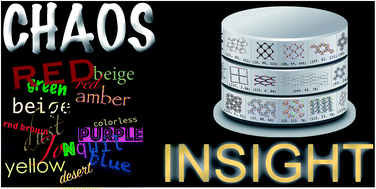A data-driven perspective on the colours of metal–organic frameworks†
Abstract
Colour is at the core of chemistry and has been fascinating humans since ancient times. It is also a key descriptor of optoelectronic properties of materials and is often used to assess the success of a synthesis. However, predicting the colour of a material based on its structure is challenging. In this work, we leverage subjective and categorical human assignments of colours to build a model that can predict the colour of compounds on a continuous scale. In the process of developing the model, we also uncover inadequacies in current reporting mechanisms. For example, we show that the majority of colour assignments are subject to perceptive spread that would not comply with common printing standards. To remedy this, we suggest and implement an alternative way of reporting colour—and chemical data in general. All data is captured in an objective, and standardised, form in an electronic lab notebook and subsequently automatically exported to a repository in open formats, from where it can be interactively explored by other researchers. We envision this to be key for a data-driven approach to chemical research.



 Please wait while we load your content...
Please wait while we load your content...